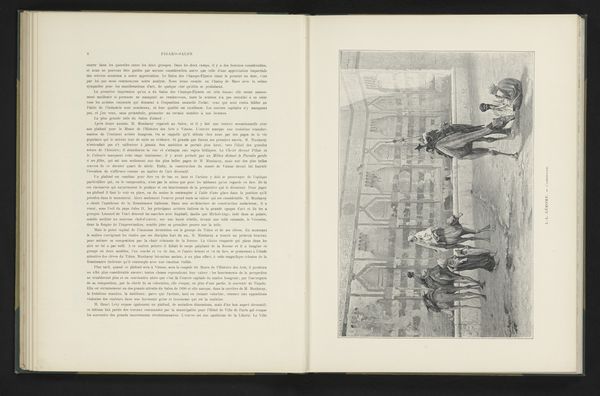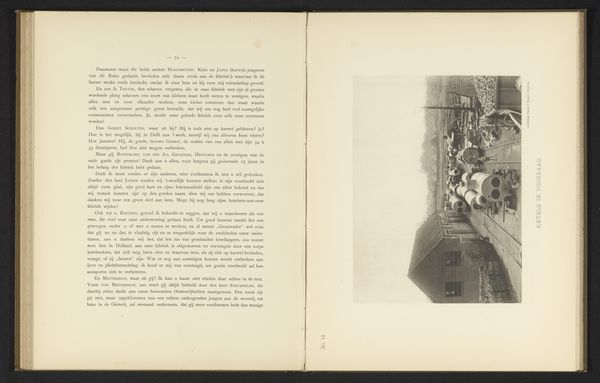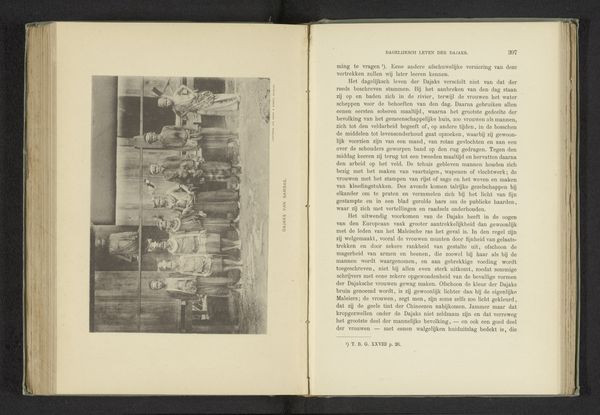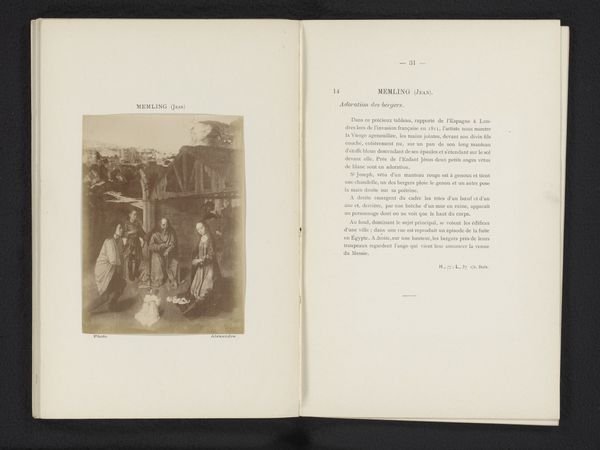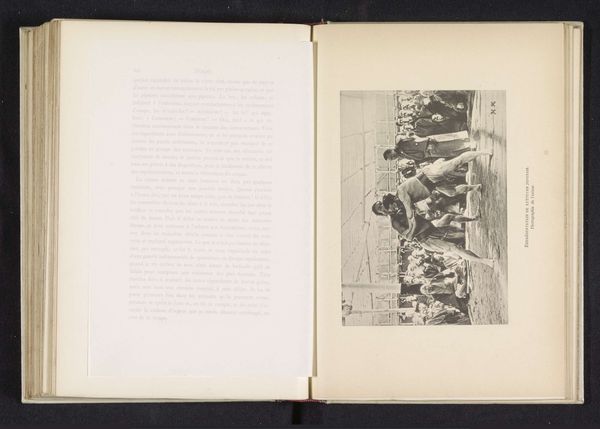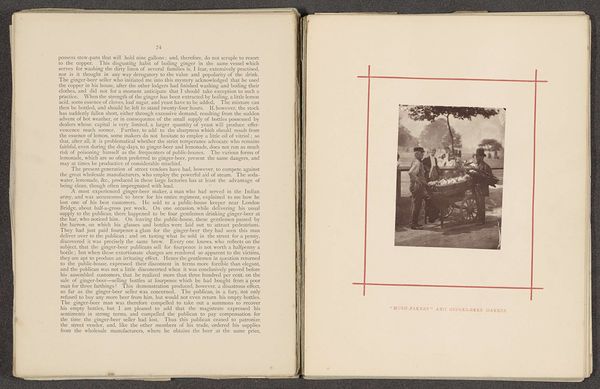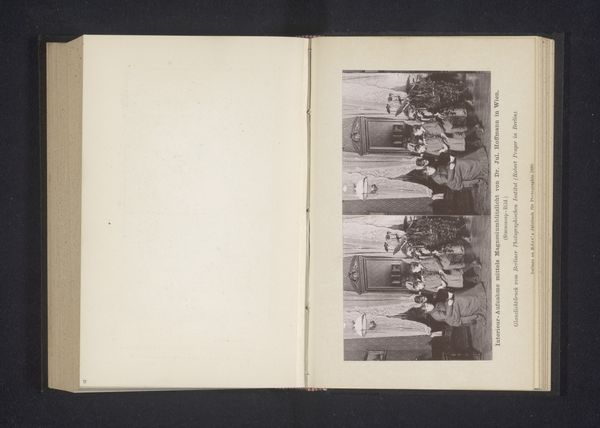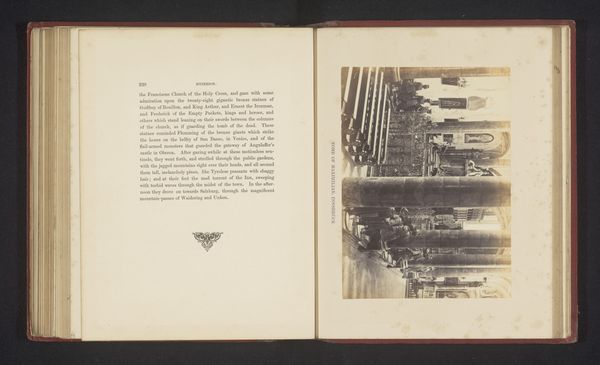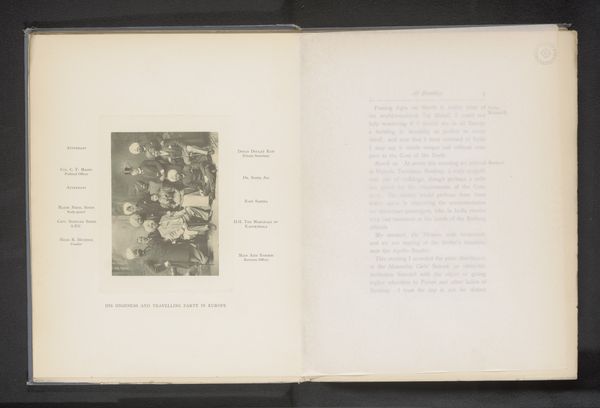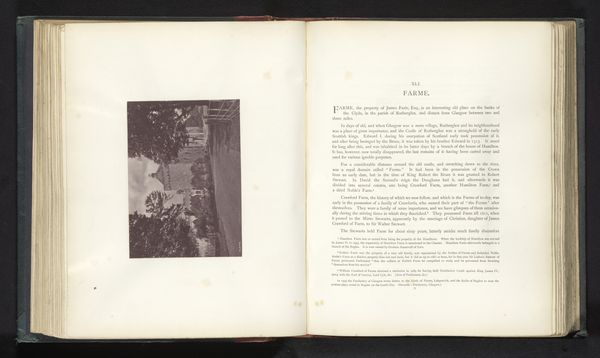
Reproductie van een schilderij van plein tijdens Mi-Carême festival door Norbert Goeneutte before 1901
0:00
0:00
anonymous
Rijksmuseum
Dimensions: height 232 mm, width 338 mm
Copyright: Rijks Museum: Open Domain
Editor: Here we have Norbert Goeneutte's painting, "Reproduction of a Painting of a Square during the Mi-Carême Festival", made before 1901. It looks to me like it captures the vibrant chaos of a festival in a French town. What do you see in this piece? Curator: This work, rendered in what seems to be an impressionistic style with plein-air techniques, is brimming with visual and cultural symbolism. Mi-Carême, a midpoint in Lent, becomes a stage where societal norms are momentarily upended. Notice the emphasis on masking and costume – those visual disruptions served a potent psychological function, allowing for temporary release and communal bonding, rooted in centuries-old traditions of carnival and disguise. Editor: So, the act of dressing up served more than just a fun purpose, you're saying? Curator: Absolutely! Each costume, each character choice is potentially loaded with meaning. A figure dressed as a clergyman could mock religious authority, while another in rags might be challenging social hierarchies. Think of the long shadow of earlier, pagan rituals asserting themselves in the context of Christian practice. Consider the subversive act of individuals momentarily inhabiting alternate identities; a cathartic and psychological 'reset.' Editor: I never thought of it that way! Curator: Also notice how Goeneutte frames the bustling crowds. Is it simply documentation or does it capture fleeting gestures in a specific socio-political moment? Editor: It is much more than that now that you mention it. I will be thinking more about this beyond face value now.
Comments
No comments
Be the first to comment and join the conversation on the ultimate creative platform.
